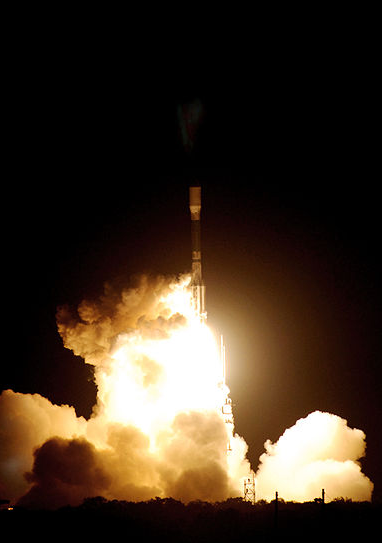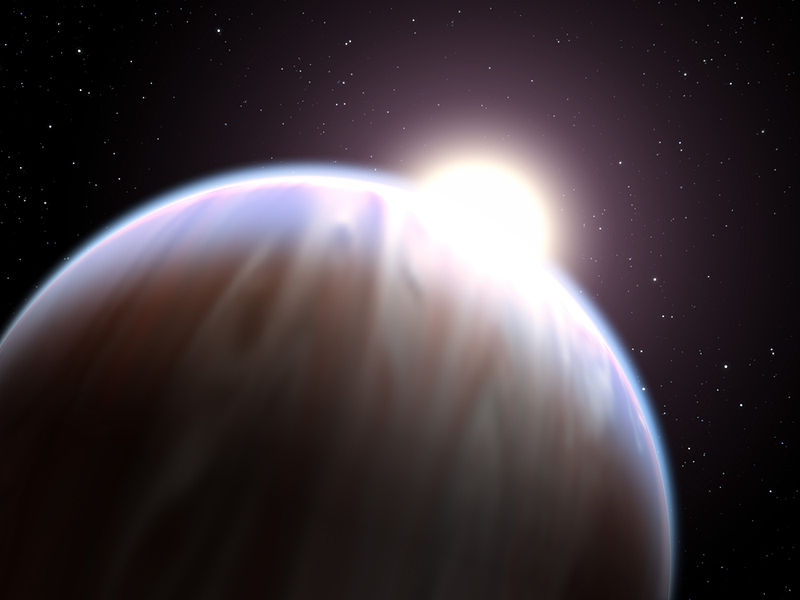Charles Stross on Planetbuilding for NEPTUNE’S BROOD (Part 1)

We are living through the golden age of exoplanetography, and nobody seems to be paying any attention!
I’ve spoken a lot about the economic side of NEPTUNE’S BROOD (UK|ANZ), but pretty much forgot to say anything about one of the other aspects of this novel – the planet much of the action is focussed on, and in orbit around. So it’s time to fix that . . .
Until the tail end of the 20th century, the existence of planets outside our solar system was widely believed in by astronomers – but never directly observed. Planets do not (with a very few extremely odd exceptions) emit heat or light directly: we can only see them by the light they reflect from their sun. This in turn makes them extremely hard to see. If you approximate a star to a light bulb a kilometre away, then the planet you’re trying to see is a dust mote orbiting within a metre of the light bulb. Any photons reflected our way from the planet are drowned out by the comparative torrent from the light bulb itself.
There are ways to measure planets indirectly, of course. In 1992, several planets were detected orbiting the pulsar PSR B1257+12 – their mass perturbed the spin of the pulsar, adding slight irregularities to its output. But improvements in experimental design, and then the launch of the Kepler planet-finder telescope, brought a deluge of new exoplanets to light. We now know of 899 planets in 698 planetary systems, and the Kepler mission has detected another 18,000 candidates: astronomers are still trawling through the embarrassment of riches.
One thing has, however, become clear: extrasolar planets are weird. In fact, they’re so weird on average that it’s beginning to look as if our home solar system is itself the exceptionally weird one, and star systems where multiple gas giants whirl in orbit single-digit millions of kilometres from their primary are the new normal.
So, in NEPTUNE’S BROOD I decided to have some exoplanet-building fun.
Welcome to Dojima System. Its star, Dojima Prime, is not too alien – it’s merely somewhat dimmer and smaller than ours – but a side-effect is that its triple-phase zone (the space around it within which planets can exist with liquid water: outside this zone water condenses into ice, inside the inner edge of the zone it’s too hot to form liquid) is somewhat closer in than our own sun’s. This is highly convenient for an SF writer because it means I can stack the deck by making the entire solar system smaller – fitting everything within approximately 10 Astronomical Units (roughly the orbital radius of Saturn). Dojima has a couple of asteroid belts, rubble left over from the period of planetary accretion. It has a gas giant, intermediate in size between Saturn and Jupiter, orbiting roughly 5AU out – where our own Jupiter lives. There are a couple of rocky planets, a couple of smaller outer gas giants. And then there is Shin-Tethys.
Shin-Tethys is a type of planet that doesn’t exist in our solar system – a hydrated super-earth.
What is a hydrated super-earth?
Firstly, it’s important to remember that our solar system is an oddity. We divide the larger objects that orbit Sol into three groups: gas giants (like Saturn or Neptune), rocky planets (like Mars or Mercury or Earth), and dwarf planets (like Pluto, Eris, or Makemake). But many of the exoplanets we’ve discovered fall into a category our solar system doesn’t have – “super-earths”. Super-earths are rocky planets that have a mass significantly higher than Earth, but which haven’t accreted the incredibly thick blanket of light gases such as hydrogen, helium, and methane that typify the gas giants. We don’t know precisely what super-earths look like – they may look like Earth, only slightly larger in diameter (and with much higher surface gravity), or they may be completely different. They may in many cases be the rocky cores of large gas giants that have been stripped of their atmosphere by solar heating – the so-called “hot Jupiters” orbit within a couple of million kilometres of their stars and have ‘surface’ temperatures hot enough to vapourize steel. But then, there are other options.

Water, contrary to folklore, is not rare in space. It’s one of the commonest molecules out there: the reason we see relatively little of it in our tiny corner of the cosmos is that small planets orbiting close to a star can’t hold onto it. Ultraviolet radiation splits water molecules in the upper atmosphere into oxygen radicals and hydrogen, which – if the hydrogen molecule receives another energetic kick from a photon – is then kicked out into space. Over millions of years small rocky planets dry out: the end product is something like Venus, a fate our own world will share in a billion years or so.
But what happens if conditions in the early days of your new solar system, with a star dimmer and cooler than our own, favour the formation of a hydrated super-earth?
Let’s speculate. Shin-Tethys has about three times the mass of the Earth – but two-thirds of it is water. The rocky core has a mass of 5 x 1024Kg, and in combination with its watery blanket it has a total mass of around 15 x 1024Kg. Assuming the rock and metal content settles to the centre of gravity (as has happened on our own planet), we have expect there to be a core of roughly 6 g/cm3 density (slightly denser than Earth) surrounded by a shell of water of roughly 1.1g/cm3.
The reason for the high density of the water layer – water normally has a density of around 1.0g/cm3 – is that under high pressure its crystaline structure is going to distort and undergo weird phase changes into more compact high pressure forms, such as high density amorphous ice; HDA has a density of around 1.17g/cm3, and VHDA around 1.26, but as VHDA forms at low temperatures (160K – or -110 celsius) and 1-2GPa pressure (read: 10-20,000 times atmospheric pressure) we can probably hand-wave our way past the effects of the phase change on overall planetary density.
The main thing to note is that HDA and VHDA are denser than liquid water. They’re forms of ice that sink. So, seen from orbit, Shin-Tethys will look like a blue ball of water: but if you go exploring in a very robust submarine, you will eventually bump into a crust of mixed rock and HDA at a depth of 150-200 kilometres. This sunken iceberg will thicken to rock, forming a layer around the planetary outer mantle a few thousand kilometres down.
Shin-Tethys may mass three times as much as Earth, but it’s fluffy – water is not very dense! If you approximate it to a sphere of rock surrounded by a sphere of water, we come up with a radius of 13,300km (Earth, for comparison, has a radius of 6,300km), surface gravity about 60% of Earth’s, and escape velocity of 12.26km/sec. (Earth escape velocity is 11.2km/sec.) This is quite odd; it suggests that Shin-Tethys has a huge oceanic surface area, won’t be excessively difficult to get into space from, and the ocean is around 160-200km deep. (The pressure head in the ocean is such that we get 1GPa of pressure at 161km below the surface.)
But why might anyone want to live there? After all, there’s no solid ground . . .
To be continued in Worldbuilding: Part 2 on the Orbit blog, Monday!
